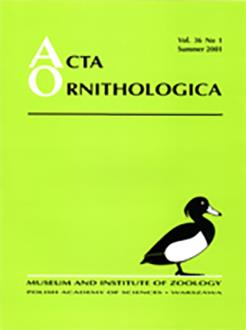This point-count based study (1995–99) provides information on the avifauna of different farmland habitats in Latvia. Ordinations identify the main gradients within the species composition pattern: from arable land to natural habitats and from woodland across open, dry areas to wet meadowlands with rivers and ponds. Regression models describing the relationship between species richness and habitat show that the best positive predictors of species richness are woodland, scrub, natural meadows, unfarmed patches such as piles of stones or brushwood, and ponds. Regression models of the habitat affinities of the 30 most frequently recorded bird species are used to describe the present-day situation and to predict the effects of possible changes in Latvian farmland. The current high bird diversity is largely upheld by a non-intensive agriculture and large set-aside areas. Both further abandonment and development towards western standards of agricultural production may have adverse effects on populations of several species of conservation concern. Environmental considerations should therefore become an integral part of the development of Latvian agriculture.
How to translate text using browser tools
1 July 2001
Relationships Between Birds and Habitats in Latvian Farmland
Ainârs Auninš,
Bo Svenning Petersen,
Jânis Priednieks,
Erik Prins
R. J. Fuller
1994. Relating birds to vegetation: influences of scale, floristics and habitat structure. In:
E. J. M. Hagemeijer,
T. J. Verstrael (eds).
Bird Numbers 1992. Distribution, monitoring and ecological aspects. Proc. XII Intern. Conf. IBCC and EOAC. Statistics Netherlands, Voorburg /Heerlen & SOVON, Beek-Ubbergen, pp. 19–28. Google Scholar
R. J. Fuller
,
R. J. Trevelyan
,
R. W. Hudson
1997. Landscape composition models for breeding bird populations in lowland English farmland over a 20 year period. Ecography 20: 295–307. Google Scholar
R. D. Gregory
1999. Broad-scale habitat use of sparrows, finches and buntings in Britain. Vogelwelt 120, Suppl.: 163–173. Google Scholar
O. Keišs
1997. Results of randomised Corncrake Crex crex survey in Latvia 1996: population estimate and habitat selection. Vogelwelt 118: 231–235. Google Scholar
A. Kyrkos
,
J. D. Wilson
,
R. J. Fuller
1998. Farmland habitat change and abundance of Yellowhammers Emberiza citrinella: an analysis of Common Birds Census data. Bird Study 45: 232–246. Google Scholar
B. S. Petersen
1998. The distribution of Danish farmland birds in relation to habitat characteristics. Ornis Fenn. 75: 105–118. Google Scholar
B. S. Petersen,
K. Falk,
K. D. Bjerre
1995. Yellowhammer Studies on Organic and Conventional Farms. Pesticides Research No. 15. Danish Environmental Protection Agency. Google Scholar
J. Priednieks,
A. Aunins,
S. Brøgger-Jensen,
E. Prins
1999. Species-habitat relationship in Latvian farmland: studies of breeding birds in changing agricultural landscape. Vogelwelt 120, Suppl.: 175–184. Google Scholar
L. Schifferli,
R. J. Fuller,
M. Müller
1999. Distribution and habitat use of bird species breeding on Swiss farmland in relation to agricultural intensification. Vogelwelt 120, Suppl.: 151–161. Google Scholar
Braak C. J. F. ter
1986. Canonical correspondence analysis: a new eigenvector technique for multivariate gradient analysis. Ecology 67: 1167–1179. Google Scholar
C. J. F. ter Braak
1994. Canonical community ordination. Part I: basic theory and linear methods. Ecoscience 1: 127–140. Google Scholar
J. A. Wiens
1989. The ecology of bird communities. Vol. 1. Foundations and patterns. Cambridge. Google Scholar

Acta Ornithologica
Vol. 36 • No. 1
July 2001
Vol. 36 • No. 1
July 2001
farmland birds
species richness
species-habitat relationships




